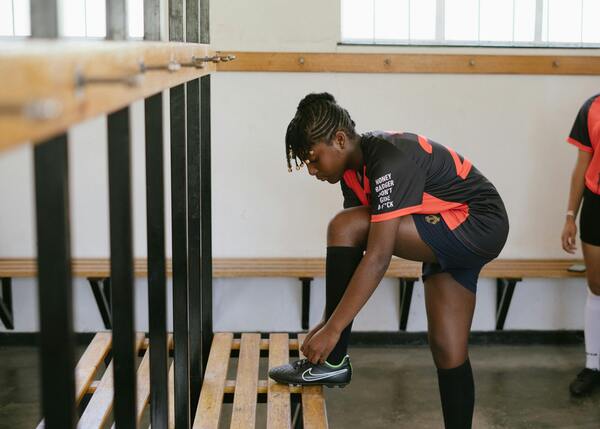Photo by Yahye Abdi
The 18th annual Conference of African American Financial Professionals (CAAFP), held Aug.12-14 in Atlanta, charged attendees with working together to advance strategies for economic empowerment that transcend generations, strengthen impact, and power transformational change. Organized each year by The American College of Financial Services, CAAFP is billed as the nation’s “premier professional development conference for Black, African American, and DEI-committed financial professionals.” Attendees were offered three tracks:
* The Client Experience – strategies for delivering exceptional client service, including how to speak to clients based on their needs, financial psychology, service offerings, and inter-generational planning;
* Scalable Business – how to build a sustainable, scalable business, with strategies for organic growth, identification of niche markets, when/how to hire, and Artificial Intelligence; and
* Specialization – specializing in complex planning to differentiate yourself from generalists, with topics like retirement income planning, insurance, philanthropy, tax planning, and wealth management.
Carver Bancorp, Inc. (“Carver”), the holding company for Carver Federal Savings Bank, said it reduced its net loss by 32 percent to $3.0 million for the fiscal year ended March 31, 2024, achieving a breakeven in the second half of the year that reveals positive earnings momentum. Although net interest income of $22.6 million was down by 1 percent from prior year, non-interest income of $6.7 million (up 87 percent) drove the bottom line, Carver said. The achievement of greater mission-aligned grant income opportunities, increased loan diversification, and greater pricing discipline in an environment of “higher for longer” cost of funding, contributed to the improved results. Indeed, Carver increased net income in the 2nd half of the fiscal year, without a corresponding increase in non-interest expense.
Carver was founded in 1948 to serve African American and Caribbean-American communities in New York whose residents, businesses, and institutions had limited access to mainstream financial services.
 Sports: Photo by Yahye Abdi
Sports: Photo by Yahye Abdi
Sports
World and business leaders representing public development banks and other financial institutions pledged to invest $10 billion across the world for community-based, inclusive and sustainable sports infrastructure by 2030. At a summit held in Paris, France, one day before the 2024 Olympic Games opened, and attended by 500 participants, including 50 heads of state and government, the leaders agreed on commitments in the fields of education and employment, health and nutrition, equality, inclusion and sustainability, among other topics. With his country slated to host the 2026 Youth Olympic Games, Senegalese President Bassirou Diomaye Faye said “the international system is being challenged and there is an urgent need to reform it to make it more inclusive, fairer and more transparent.”
The global sports tourism market is estimated to grow by US$771.4 billion from 2024 to 2028, boosted by Olympic Games and other major sports events, according to Technavio, a global market research company. The sports technology market alone is projected to increase by US37.85 billion between 2023 and 2028, growing by nearly 24 percent annually, the company reports. That growth hinges on several factors, notably the surge in sports technology events, a growing emphasis on IoT (Internet of things) integration, and heightened demand for wearable devices and fitness trackers. The increased demand for wearable devices and fitness trackers reflects a broader trend toward health-conscious lifestyles, driving sustained market expansion.
 Photo by Yahye Abdi
Photo by Yahye Abdi
STEM
Black Girls Do Engineer, the preeminent national educational nonprofit organization aimed at bringing more Black girls into STEM fields, on Aug. 10 held their inaugural day-long event for girls from kindergarten through college at Major R. Owens Health and Wellness Community Center in Brooklyn, New York. The Black Girls Do Engineer STEMFest, which sold out in record time, featured hands-on STEM educational activities focused the disciplines of Data Science and Software Engineering, currently two of the fastest growing STEM-related job markets in New York State.
Student attendees also enjoyed a Q&A program with experts working in the STEM fields, along with mentorship and a luncheon among STEM professionals. STEM jobs reportedly are growing twice as fast as non-STEM jobs across the U.S., with a projected 11.2 million positions needing to be filled by the year 2030. Only 2.9 percent of STEM jobs currently are filled by Black American women.
Workplace
According to the latest analysis by Stocklytics.com, 15 percent of the current healthcare workforce hours will be subject to automation by 2030. The growing reliance on AI is primarily due to the swelling patient population and a shorter pool of health specialists.
Nearly 90 percent of healthcare workers, life science companies, and tech vendors use AI in some capacity. AI implementation in healthcare systems can be categorized into machine learning, natural language processing, computer vision, and context-aware computing. So far, machine learning has taken the lead in most AI-driven solutions by integrating AI and robotics in diagnosis and treatment.
In July, ResumeBuilder.com surveyed 600 business leaders involved in decisions to terminate employees at companies that had layoffs in the past year. Among the key findings:
More than half of business leaders admit that 75 percent or more of the layoffs at their company in the past year were not necessary for cutting costs;
Sixty-three percent of companies have laid off employees in the past year;
Eighty percent say their company chose to layoff an employee instead of firing them;
Thirty-one percent of business leaders surveyed say performance is always a factor in layoff decisions;
Sixty-two percent say the main reason for disguising firings as layoffs is to maintain company morale, followed by 59 percent who say avoiding wrongful termination claims is the main reason, and 54 percent who say the main reason is to avoid providing severance.



